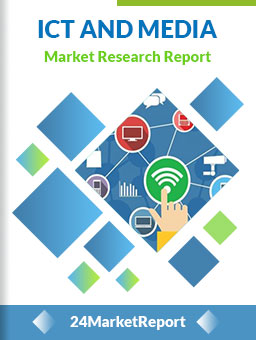
Download FREE Report Sample
Download Free sampleMARKET INSIGHTS
Global Order Fulfillment Software market size was valued at USD 2,595 million in 2024. The market is projected to grow from USD 2,886 million in 2025 to USD 5,312 million by 2032, exhibiting a CAGR of 11.0% during the forecast period.
Order fulfillment software is a critical component of modern supply chain management, automating the end-to-end process from order receipt to final delivery. These solutions integrate inventory management, warehouse operations, shipping logistics, and returns processing to create a seamless workflow. Key functionalities typically include real-time inventory tracking, multi-channel order processing, carrier integrations, and analytics dashboards.
The market growth is being driven by the explosive expansion of e-commerce, which grew 8.9% in 2023 according to Digital Commerce 360, coupled with rising consumer expectations for faster deliveries. While North America dominates with 57% market share due to advanced logistics infrastructure, Asia-Pacific is emerging as the fastest-growing region with a projected 14.2% CAGR through 2032. The shift toward cloud-based solutions, which command 85% market share, reflects broader digital transformation trends across retail and manufacturing sectors. Recent innovations include AI-powered demand forecasting and blockchain-enabled shipment tracking, with major players like SAP Ariba and Salesforce expanding their fulfillment capabilities through strategic acquisitions.
E-commerce Boom Accelerating Adoption of Order Fulfillment Solutions
The global e-commerce market continues its explosive growth trajectory, with online retail sales projected to surpass $6.3 trillion by 2024, creating unprecedented demand for efficient order fulfillment systems. This digital commerce expansion is driving organizations to invest heavily in automation software that can accurately process high order volumes with minimal errors. Modern fulfillment solutions integrate seamlessly with major e-commerce platforms, enabling real-time inventory updates and streamlined workflows across multiple sales channels. As consumers increasingly expect same-day or next-day delivery, businesses are prioritizing software that optimizes warehouse operations, reduces shipping times, and improves customer satisfaction metrics.
Cloud-Based Technologies Enabling Scalable Fulfillment Operations
To know more about market statistics, Download a FREE Sample copy
The shift toward cloud-based order fulfillment systems, which currently dominate 85% of the market share, provides businesses with the flexibility to scale operations quickly during peak periods while maintaining cost efficiency. These SaaS solutions eliminate the need for expensive on-premise infrastructure, offering automatic software updates, enhanced security protocols, and mobile accessibility. The integration of artificial intelligence in modern fulfillment platforms enables predictive analytics for inventory management, reducing stockouts by up to 50% in some implementations. Furthermore, cloud-based systems facilitate seamless collaboration between geographically dispersed teams and third-party logistics providers, creating a cohesive supply chain ecosystem.
Omnichannel Retailing Driving Software Innovation
Retailers adopting omnichannel strategies require sophisticated fulfillment software that can synchronize inventory across physical stores, warehouses, and online marketplaces. The retail sector, accounting for approximately 50% of the market, is driving demand for solutions that provide centralized order management with advanced routing logic. Modern systems automatically determine the most cost-effective fulfillment source—whether from a distribution center, retail location, or dropship supplier—reducing shipping costs by 15-25% while improving delivery speed. This capability has become particularly valuable as 60% of consumers expect consistent shopping experiences across all channels, including flexible options like buy-online-pickup-in-store (BOPIS) and curbside pickup.
Implementation Complexity Hindering Small Business Adoption
While enterprise organizations readily adopt advanced fulfillment systems, many small and mid-sized businesses face significant barriers to implementation. The integration of fulfillment software often requires substantial changes to existing workflows, employee training programs, and IT infrastructure. Migration from legacy systems can result in temporary operational disruptions that impact order processing accuracy and delivery timelines. Additionally, the costs associated with API integrations to connect with existing ERP, CRM, and e-commerce platforms can be prohibitive for smaller merchants, particularly when coupled with ongoing subscription fees that typically range from $100 to $1000+ per month depending on order volume and feature requirements.
Carrier Rate Volatility Impacting Shipping Cost Calculations
Order fulfillment software relies heavily on accurate shipping cost calculations to optimize logistics expenses. However, frequent carrier rate changes and complex dimensional weight pricing models create challenges for software providers to maintain current rate tables. Major parcel carriers implemented 5-10% average annual rate increases in recent years, with additional surcharges during peak seasons. This volatility requires continuous software updates and may lead to temporary discrepancies between estimated and actual shipping costs, potentially impacting profit margins. Furthermore, international shipping presents additional complications with customs regulations, duties, and taxes that fulfillment platforms must accurately incorporate into total cost calculations.
AI-Powered Predictive Analytics Driving Next-Gen Solutions
The integration of artificial intelligence and machine learning technologies presents significant growth opportunities for advanced order fulfillment systems. Modern platforms now utilize predictive analytics to forecast demand with 90%+ accuracy in some implementations, enabling proactive inventory positioning and workforce planning. AI-driven fulfillment solutions can automatically adjust warehouse slotting based on seasonality, sales velocity, and product affinities. Additionally, machine learning algorithms continuously optimize pick paths and packaging configurations, reducing labor costs by 20-30% while improving order processing speed. These intelligent systems also provide real-time exception handling for delayed shipments or inventory discrepancies, automatically triggering alternative fulfillment workflows to maintain customer service levels.
Expansion of Third-Party Logistics Market Creating New Demand
The growing third-party logistics (3PL) sector, projected to exceed $1.7 trillion by 2027, represents a major growth avenue for fulfillment software providers. 3PL companies require sophisticated warehouse management capabilities coupled with client-facing portals for order tracking and inventory visibility. Advanced fulfillment platforms now offer multi-tenant architectures that allow 3PLs to manage multiple client accounts with customized workflows while maintaining complete operational segregation. This functionality enables logistics providers to efficiently handle diverse product categories with varying storage requirements, shipping rules, and reporting needs. The trend toward distributed fulfillment networks has further increased demand for software capable of coordinating inventory across multiple 3PL locations to achieve faster regional delivery times.
Talent Shortage in Supply Chain Technology Roles
The rapid evolution of fulfillment technologies has created a significant skills gap in the labor market, with over 60% of companies reporting challenges finding qualified personnel to implement and manage advanced systems. Modern platforms require professionals with expertise in both supply chain operations and technology integration, including knowledge of API connectivity, data analytics, and process automation. This talent shortage often leads to extended implementation timelines and increased reliance on vendor professional services. Furthermore, the complexity of contemporary fulfillment ecosystems makes employee training an ongoing challenge, particularly as software vendors release new features and functionality several times annually.
Cybersecurity Risks in Multi-Channel Fulfillment Systems
As fulfillment platforms increasingly connect to multiple external systems—including e-commerce sites, marketplaces, and carrier networks—they create expanded attack surfaces for cyber threats. The average cost of a data breach in the retail sector now exceeds $3 million per incident, making security a top concern for organizations evaluating fulfillment solutions. Software providers must maintain rigorous security protocols including end-to-end encryption, multi-factor authentication, and regular penetration testing while ensuring these measures don't introduce latency to time-sensitive order processing workflows. Additionally, compliance with global data protection regulations such as GDPR and CCPA adds complexity to system architecture, particularly for businesses operating across international borders.
Web- and Cloud-based Solutions Dominate Due to Scalability and Remote Accessibility
The market is segmented based on type into:
Web- and Cloud-based
Subtypes: SaaS-based fulfillment solutions, hybrid cloud deployments
On Premise
Retail Sector Leads as E-commerce Growth Drives Demand for Efficient Order Processing
The market is segmented based on application into:
Retail
Telecom
Pharmaceuticals and Healthcare
Manufacturing
Others
Enterprise-grade Solutions Gain Traction Among Large-scale Operations
The market is segmented based on deployment model into:
SMB Solutions
Enterprise Solutions
Inventory Management Features Are Critical for Modern Fulfillment Systems
The market is segmented based on functionality into:
Order Processing
Inventory Management
Shipping Management
Returns Processing
Analytics and Reporting
E-commerce Boom and Supply Chain Innovations Drive Intensified Market Competition
The global order fulfillment software market is characterized by a dynamic mix of established enterprise solutions and agile SaaS providers. SAP Ariba and Oracle NetSuite dominate the enterprise segment with their comprehensive supply chain ecosystems, collectively accounting for over 15% of the market share in 2024. Their dominance stems from deep integrations with ERP systems and multinational deployment capabilities, particularly in the retail and manufacturing sectors.
Meanwhile, mid-sized players like ShipStation and Shippo are gaining traction through specialized solutions for SMBs. ShipStation's 2023 partnership with TikTok Shop exemplifies how niche players are capitalizing on emerging sales channels. These companies grew their market share by 22% year-over-year through such platform integrations.
The competitive landscape is further evolving through strategic acquisitions. Salesforce strengthened its Commerce Cloud capabilities by acquiring order management specialist IRP Commerce in 2022, while Intuit expanded into fulfillment automation through its acquisition of TradeGecko. Such moves highlight how CRM and accounting software providers are expanding vertically into order fulfillment.
Cloud-native solutions now represent 85% of new implementations, with providers like Cin7 and Fishbowl leading warehouse management innovations. Recent advancements in AI-powered inventory forecasting and automated returns processing are becoming key differentiators, prompting vendors to allocate 25-30% of R&D budgets to machine learning features.
SAP Ariba (Germany)
Intuit (U.S.)
Salesforce (U.S.)
Oracle NetSuite (U.S.)
Da Vinci Systems (U.S.)
ShipStation (U.S.)
monday.com (Israel)
3PL Warehouse Manager (U.S.)
Shippo (U.S.)
Cin7 (New Zealand)
Fishbowl (U.S.)
Shipedge (U.S.)
The shift toward cloud-based order fulfillment software continues to accelerate, currently holding over 85% market share as businesses prioritize scalability and remote accessibility. Unlike traditional on-premise systems, cloud solutions offer real-time inventory tracking across multiple warehouses, automated carrier selection, and seamless integration with eCommerce platforms. The flexibility of pay-as-you-go models has particularly resonated with SMBs, contributing to a projected 13.2% annual growth in SaaS-based fulfillment solutions through 2027. Advanced features like AI-driven demand forecasting and automated returns processing are now becoming standard offerings, further widening the gap between cloud and legacy systems.
Omnichannel Fulfillment Complexity
Retailers operating across 3+ sales channels now represent approximately 63% of software buyers, driving demand for unified inventory management capabilities. The average enterprise uses 6.8 different sales channels, from marketplaces like Amazon to social commerce platforms, creating logistical challenges that specialized fulfillment software addresses through centralized order routing and real-time stock synchronization. This trend is particularly pronounced in North America, where omnichannel retail accounts for nearly 30% of total retail sales.
Investment in AI-powered fulfillment tools grew by 42% year-over-year as warehouses combat labor shortages and rising shipping expectations. Current-generation software incorporates machine learning for dynamic route optimization, reducing last-mile delivery costs by an average of 18%. Predictive analytics now enable 93% inventory accuracy rates among adopters, while robotic process automation handles 57% of routine fulfillment tasks. These technological leaps are critical as same-day delivery demand triples, with 45% of consumers willing to pay premiums for accelerated service tiers.
North America
North America dominates the global order fulfillment software market with a 57% revenue share as of 2024, driven by advanced e-commerce infrastructure and a high concentration of logistics players. The United States remains the epicenter of innovation, with companies like SAP Ariba, Intuit, and Salesforce leading adoption. Retail giants investing in omnichannel strategies and same-day delivery capabilities fuel demand for cloud-based solutions. However, rising operational costs and labor shortages are pushing businesses toward AI-driven automation to optimize warehouse efficiency. Canada and Mexico follow closely, benefiting from cross-border trade agreements like USMCA, which accelerates digital transformation in logistics.
Europe
Europe's market thrives on stringent data privacy regulations (GDPR) and a mature e-commerce sector, with Germany and the UK at the forefront. The region emphasizes sustainability, prompting software providers to integrate carbon footprint tracking into fulfillment workflows. Third-party logistics (3PL) partnerships are expanding, particularly in Benelux and Nordic countries, where startups like Shippo and Brightpearl gain traction. Challenges include fragmented tax policies and delayed adoption in Southern Europe due to smaller retail operations. Nonetheless, cross-border EU trade harmonization and investments in last-mile delivery innovations present growth opportunities.
Asia-Pacific
Asia-Pacific is the fastest-growing region, propelled by China’s e-commerce boom (50% of retail fulfillment demand) and India’s digital-first SMEs adopting SaaS solutions. Cost sensitivity favors scalable, low-code platforms like Cin7 and local players offering multilingual support. Japan and South Korea prioritize robotics integration in warehouses, while Southeast Asia’s emerging markets rely on mobile-first solutions. Logistics bottlenecks—such as underdeveloped rural infrastructure—hinder seamless adoption. However, government initiatives like India’s PM Gati Shakti scheme aim to modernize supply chains, unlocking long-term potential.
South America
Market growth in South America is uneven, with Brazil and Argentina driving demand via retail and pharmaceutical sectors. Economic volatility limits enterprise-level software investments, favoring modular, pay-as-you-go models. Mercosur trade agreements encourage regional logistics collaboration, yet currency fluctuations and customs delays persist. Local vendors like Now Commerce tailor solutions for informal supply chains, though cloud adoption lags behind global averages. The rise of neighborhood delivery networks hints at niche opportunities in urban hubs.
Middle East & Africa
The MEA region shows nascent but promising growth, led by UAE, Saudi Arabia, and South Africa, where e-commerce platforms integrate fulfillment software to compete globally. Oil economies funnel investments into smart warehouses, while East Africa’s mobile payment ecosystems enable agile SMEs. Challenges include low tech literacy and reliance on manual processes outside major cities. Strategic partnerships, such as Dubai’s Silk Road initiatives, aim to bridge gaps, with firms like DiCentral expanding regional footprints.
This market research report offers a holistic overview of global and regional markets for the forecast period 2025–2032. It presents accurate and actionable insights based on a blend of primary and secondary research.
✅ Market Overview
Global and regional market size (historical & forecast)
Growth trends and value/volume projections
✅ Segmentation Analysis
By product type or category
By application or usage area
By end-user industry
By distribution channel (if applicable)
✅ Regional Insights
North America, Europe, Asia-Pacific, Latin America, Middle East & Africa
Country-level data for key markets
✅ Competitive Landscape
Company profiles and market share analysis
Key strategies: M&A, partnerships, expansions
Product portfolio and pricing strategies
✅ Technology & Innovation
Emerging technologies and R&D trends
Automation, digitalization, sustainability initiatives
Impact of AI, IoT, or other disruptors (where applicable)
✅ Market Dynamics
Key drivers supporting market growth
Restraints and potential risk factors
Supply chain trends and challenges
✅ Opportunities & Recommendations
High-growth segments
Investment hotspots
Strategic suggestions for stakeholders
✅ Stakeholder Insights
Target audience includes manufacturers, suppliers, distributors, investors, regulators, and policymakers
-> Key players include SAP Ariba, Intuit, Salesforce, NetSuite, Da Vinci, ShipStation, monday.com, 3PL Warehouse Manager, Shippo, and Kuebix TMS, among others. The top three players hold approximately 20% market share collectively.
-> Key growth drivers include rising e-commerce penetration, demand for supply chain automation, increasing complexity in logistics operations, and the need for real-time inventory visibility. The retail sector accounts for 50% of market demand.
-> North America leads with 57% market share, followed by Europe and Asia-Pacific. The U.S. remains the largest single market due to advanced logistics infrastructure and high e-commerce adoption.
-> Emerging trends include AI-powered demand forecasting, blockchain for supply chain transparency, omnichannel fulfillment solutions, and cloud-based platforms (representing 85% of deployments). Sustainability features in fulfillment software are gaining traction.

Speak to our Custom Research Team and get the Custom Research in a budget
Custom ResearchFrequently Asked Questions ?
A license granted to one user. Rules or conditions might be applied for e.g. the use of electric files (PDFs) or printings, depending on product.
A license granted to multiple users.
A license granted to a single business site/establishment.
A license granted to all employees within organisation access to the product.
Upto Working 24 to 48 hrs
Upto 72 hrs max - Weekends and Public Holidays
Online Payments with PayPal and CCavenue
Wire Transfer/Bank Transfer
Hard Copy


 Industry Market Size
Industry Market Size SWOT Analysis
SWOT Analysis Industry Major Players
Industry Major Players Revenue Forecasts
Revenue Forecasts Historical and Forecast Growth
Historical and Forecast Growth Profitability Analysis
Profitability Analysis
























